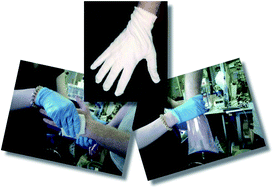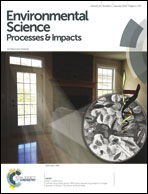A preliminary comparison of three dermal exposure sampling methods: rinses, wipes and cotton gloves
Abstract
Several methods exist to estimate dermal exposure and it is unclear how comparable they are. These methods fall into three main categories: (i) removal techniques (such as wiping or rinsing); (ii) interception techniques (such as gloves, patches, or coveralls); and (iii) fluorescent tracer techniques. Controlled experiments were conducted to compare two removal methods for exposure to particulate, and a removal method with an interception method for exposure to liquids. Volunteers' hands were exposed to three liquid solutions (glycerol–water solutions of different concentrations) and three particulates (Epsom salts, calcium acetate and zinc oxide) in simulated exposure scenarios. Both hands were exposed and a different sampling method was used on each to allow comparison of methods. Cotton glove samplers and a cotton wipe sampling method were compared for exposure to liquids. For exposure to powders a cotton wipe sampling method was compared to rinsing the hands in deionised water. Wipe and rinse methods generally yielded similar results for Epsom salts and zinc oxide (geometric mean [GM] ratios of wipe-to-rinse measurements of 0.6 and 1.4, respectively) but they did not for calcium acetate (GM wipe-to-rinse ratio of 4.6). For glycerol solutions measurements from the glove samplers were consistently higher than wipe samples. At lower levels of exposure the relative difference between the two methods was greater than at higher levels. At a hand loading level of 24 000 μg cm−2 (as measured by wiping) the glove-to-wipe ratio was 1.4 and at a hand loading of 0.09 μg cm−2 the ratio was 42.0. Wipe and rinse methods may be directly comparable but the relationship between glove and wipe sampling methods appears to be complex. Further research is necessary to enable conversion of exposure measurements from one metric to another, so as to facilitate more reliable risk assessment.


 Please wait while we load your content...
Please wait while we load your content...